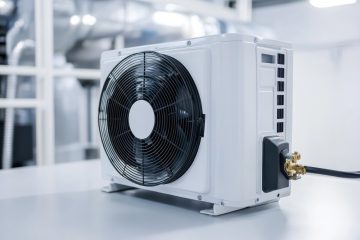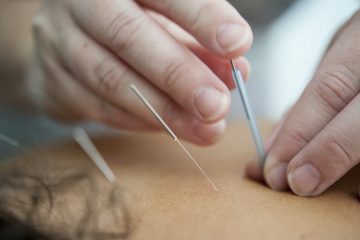Laundry detergents are one of the most frequently cited causes of eczema, but why do some detergents irritate some people while others do not? We looked into what goes into laundry detergent and discovered a lot about how to clean laundry well in the process in order to avoid itching.
But first… We present our top tips for eczema-friendly laundry, as well as the ScratchSleeves family’s test of eczema-friendly laundry detergents.
Many of the chemicals found in modern laundry detergents may aggravate eczema. Optical brighteners and fragrances, on the other hand, are put there to adhere to the textured fibers of clothing and not be removed by the rinse cycle.
What’s in your laundry detergent?
Is there any chance your laundry detergent could be causing a negative reaction in your home? If you’re wondering whether or not you should continue purchasing the same brand of detergent-or if it’s time to switch brands-then this is the question for you. While I’m sure most of us have never heard of “fragrance,” the chemicals that are used in clothing and household products may alter how we smell, making these items less appealing and desirable. -> Is there any danger that your laundry detergent is giving your family an allergy? Because washing soda isn’t required to be listed on the packaging, determining if something is wrong might be difficult. Most information will be generic if there is an ingredients list.
The three or four primary ingredients in modern detergent formulations do the actual washing: surfactants, enzymes, bleaches, and builders. Then there’s all of the other stuff that isn’t really cleaning any clothes but is instead making them appear cleaner (optical brighteners) or giving them a nice scent (fragrance or parfum). In certain people, any of these detergent components might exacerbate eczema or cause allergic responses.
1. Surfactants
This is the part of laundry detergent that I consider to be a real “detergent.” Surfactants (from Surface Active Agents) are chemicals that loosen dirt from the surface of fabrics and transport it into washing water. They function in two ways: first, they lower the surface tension of water, allowing it to seep into dirty clothes fibers and remove the dirt more effectively.
After that, there’s the clever part; one surfactant side is attracted to water while the other is attracted to dirt and grease. This means that the surfactant molecules link with the dirt and grease before breaking it down and carrying it away in the rinse water.
Linear alkylbenzene sulfonates (often known as anionic surfactants, which are frequently produced from petrochemicals but may also be found in natural sources) are one of the most frequent types of surfactants utilized in laundry washing powder. soap is used in some laundry detergents, especially those with eczema benefits.
Surfactants are degreasers, and any residues remaining in clothing may irritate eczema-prone skin. To make sure your laundry is fully rinsed, use a surfactant. The National Eczema Association advises that if your washing machine has a second or “extra rinse” option, you should utilize it. Minimizing the detergent residue can also make the cloth softer and help with the need for a fabric softener. If thorough rinsing fails to alleviate your child’s eczema, try using a less aggressive, soap-based detergent instead.
2. Enzymes
Enzymes are included in biological washing powders to break down protein, starches, and fat in dirt and stains. Enzymes contained in biological detergents function effectively at lower temperatures than normal detergents but typically cease functioning at temperatures above 50°C.
There are a number of different enzymes in biological detergents: amylase (for carbohydrates), cellulase (for grass stains), protease (for proteins) and lipase (good for removing grease and oils, including those found in eczema treatments). Different enzymes function best at various temperatures, so if you’re having trouble removing a certain stain, experiment with different enzymes.
Contrary to popular belief, there is no solid evidence that enzymes exacerbate eczema in the general public. In fact, according to a research conducted by St Thomas’ Hospital, Nottingham University, and St Mary’s Hospital “…investigations of several patients with skin problems linked to laundry products have demonstrated conclusively that enzymes are not to blame. Enzyme-containing washcloths have a long track record of secure usage. As a result, the supposed harmful effects of enzymes on the skin appear to be a product of mythologizing.”
3. Bleach
The act of oxidation breaks down the larger dirt molecules into smaller, colourless ones. This implies not just that the dirt is less apparent, but also that the smaller molecules are easier for the surfactants to combine with and wash away.
Bleach also has a strong antibacterial and antifungal effect, which is why it’s so popular with washers. It’s also great at eliminating germs and mould (and their odors) from clothing and your washing machine. Sodium hypochlorite (commonly known as chlorine bleach) is particularly effective at this. It’s good to know that powdered detergents for “white” clothes usually include bleach, whereas liquids, gels, and “color” detergents do not.
Bleach-based detergents are most useful in treating infected eczema, according to an eczema perspective, since they are the most dependable way to eliminate germs from clothing. According to a recent Which? study, washing with detergents containing bleach is preferable to washing at 60°C. Because bleach breaks down rapidly into salt and oxygen when exposed to light, air, and water, it will be carried away in the rinse water and won’t leave irritating residues on your clothes.
The bleach in powders for “white washes” may also assist with eczema management, as it has been shown in a 2007 study that sufferers of atopic dermatitis have an increased susceptibility to Staphylococcus aureus infection.
Bacteria on the skin can lead to skin infections, discomfort, and immunological responses that have been linked to worsening eczema symptoms. By eliminating germs and molds from your clothes as well as your washing machine, the bleach in your laundry detergent may be beneficial.
4. Builders
Builders are used to soften the washing water (which improves surfactant efficiency) and raise alkalinity (which aids in the removal of oils and grease). The following are some common builders: polycarboxylates, phosphonates, sodium carbonate, zeolites, and even soap, all of which bind with calcium and magnesium ions (making water “hard”) to make the surfactant more efficient.
According to the Ariel website, if you reside in a hard water region, you should use more detergent to soften the water and provide adequate cleaning power. A less expensive alternative is to add an extra “builder” to your wash – a tablespoon or two of soda crystals added to your machine’s detergent drawer should be enough. You’re not adding any superfluous detergents, optical brighteners, or fragrances with this method, which can build up in your washing and irritate your child’s eczema.
5. Optical brighteners
Whitening detergent additives don’t really make your clothes any cleaner; instead, they make whites appear whiter by boosting the amount of UV light reflected by the cloth, which masks any discolouration or dullness. Optical brighteners are responsible for making clothing shine under UV light because to the optical brighteners. Optical brighteners are notorious for irritating sensitive skin, especially if it is exposed to sunlight later on, but there has been very little study done about their safety.


